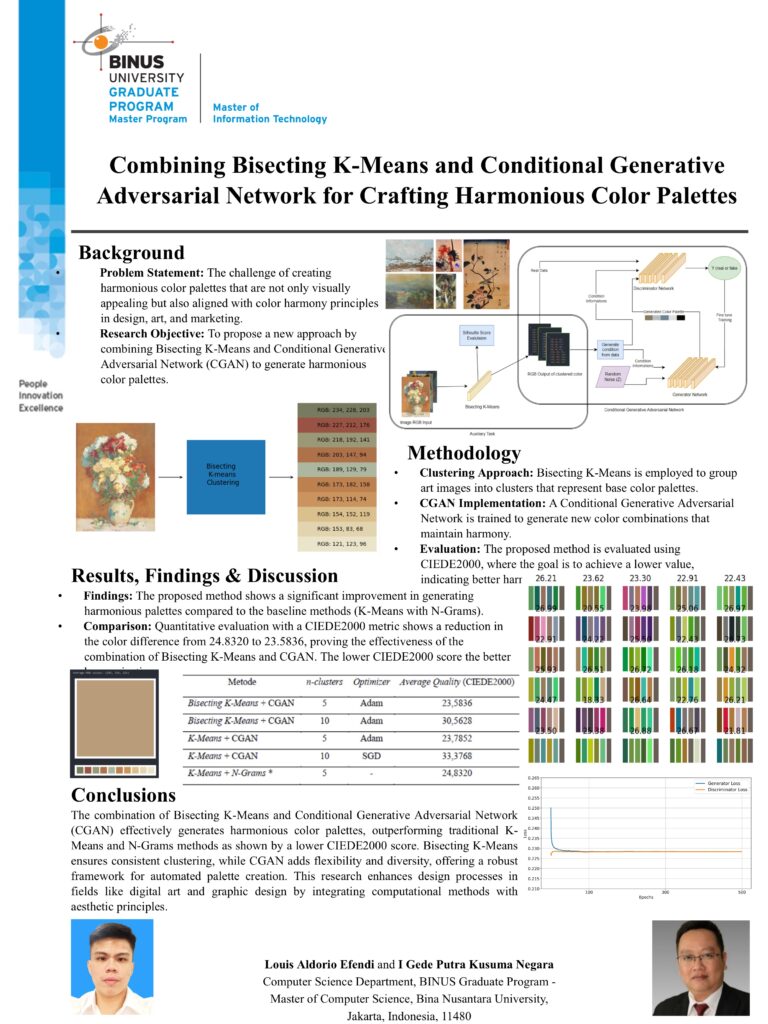Combining Bisecting K-Means and Conditional Generative Adversarial Network for Crafting Harmonious Color Palettes
Crafting harmonious color palettes is essential in various fields such as design, art, and marketing. This paper presents a novel approach by integrating Bisecting K-Means clustering with a Conditional Generative Adversarial Network (CGAN) to generate harmonious color palettes. The Bisecting K-Means algorithm is employed to partition an art image dataset into clusters that represent the ground truth color palettes. Subsequently, a CGAN is trained on these clustered data to learn and generate new color combinations that maintain harmony and balance. The effectiveness of the proposed method is evaluated through quantitative metrics of CIEDE2000 where a smaller value indicates better performance, with the proposed method achieving a value of 23.5836 compared to the baseline method, which recorded a value of 24.8320, indicating an improvement of 1.2484. This research used two clustering methods as feature extractor on image dataset, specifically K-Means and Bisecting K-Means. This research is using a dataset from WikiArt which consists of various art drawings from human histories by famous painters all around the world. Results indicate that our approach successfully produces color palettes that are not only diverse and visually appealing but also adhere to the principles of color harmony, offering a significant improvement over traditional methods and previous research with combination of K-Means and N-Grams. This research contributes to the field by providing a robust framework for automated color palette generation, facilitating creativity, and enhancing the design process.
Keywords: Color Palette, Color Clustering, Bisecting K-Means, Conditional Generative Adversarial Network, Harmonious Color Palette




Comments :